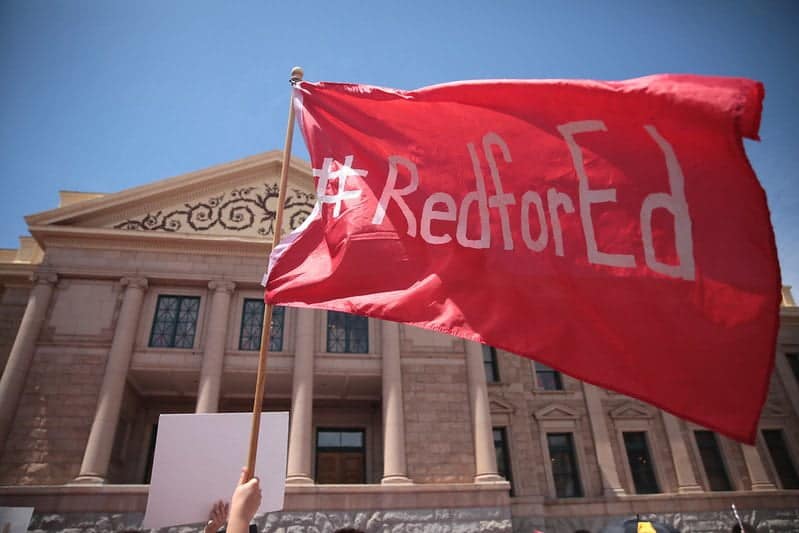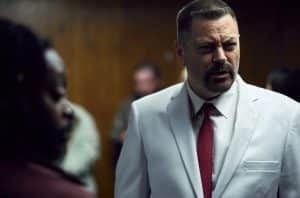Where does the spirit of Red for Ed, the teacher-led labor movement that began in 2018, stand today?
Red for Ed began that February when educators and staff at schools across West Virginia went on strike to demand better pay. Their direct action inspired strikes in other states, especially those with majority Republican legislatures (hence the name “Red for Ed”). Educators in Arizona, Kentucky, and Oklahoma went on illegal wildcat strikes to fight against the poverty wages and chronically underfunded schools that were resulting in both intolerable working conditions and learning conditions.
Since then, the movement has seen ebbs and flows. But that’s the nature of organizing. There is no straight line of progress, but instead waves that slowly and determinedly wash against the shores—little by little changing the landscape.
Of course, there have been other big waves too, such as the solidarity strike in Los Angeles in March of this year that saw members from United Teachers Los Angeles (UTLA) show up for support staff. The result was major wage gains for support staff, like bus drivers, teaching aides, special education assistants, and other workers who contribute to functioning schools. The strike also influenced a significant contract settlement for UTLA members as well.
Still, inflation, limited housing options, and political attacks against educators striving to just do their jobs have driven educators to leave the profession.
For those of us who will be in the classroom this coming year, we need the public to see what we see. Throughout my state of New Hampshire, public educators are confronting a new school year without enough guidance counselors, with support staff getting crushed by the cost of living, and with money that could be used to help our students being used to fund voucher programs. It’s the same scenario playing out all across the country.
The question now, it seems to me, is what do we do about all of this?
For one, we can’t stand idly by. We can’t believe that officials above us will save us. We must see opportunities to build something new, to create resilient communities, to strengthen relationships between educators.
We cannot close our classroom doors and expect the problems of the world to go away. We have seen too many times before that there is no stopping the downward slide of gloom unless we meet it with the kind of positive energy force that we bring to classrooms—we need a collective energy that exceeds the force of the push for privatization.
This energizing force can only come from one place and from one direction: from the grassroots.
It was the animating force of Red for Ed, it is the power of organized labor, it is the simple idea that everyday folks can come together to address the issues that they see everyday—issues that other folks don’t seem to acknowledge.
Each time teachers and support staff stand together to bring issues of working people to light, we bring meaning to the idea of a union as a collective working toward a common goal and sharing the same collective fate.
Unions, at their best, are built around a love for our fellow colleagues and our fellow workers. It is expressed when the voices of the seldom heard echo in the halls: the halls of schools, of board rooms, and ultimately, in the halls of power.
Voucher schemes in states like my own are evidence of the need to build stronger unions. We need unions that can make the case for the public good that public education provides, unions that are unabashedly of and for the educators who go the extra mile each day for kids, communities, and the common good.
We cannot ignore the ugliness of the status quo, with fear driving people apart, books being banned, and teachers training for active shooter drills. Each one of our students are too precious to turn our attention away from the work that we must do together to bring about change.
This school year, let’s recommit to the labor of love that is standing up for public schools, our students, and the communities we serve by building stronger and more inclusive unions. The movement for public schools isn’t dead. It’s just getting started.
This article was originally published in The Progressive and reprinted here with permission.







